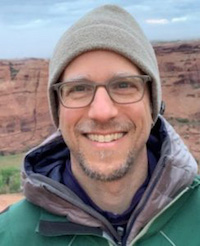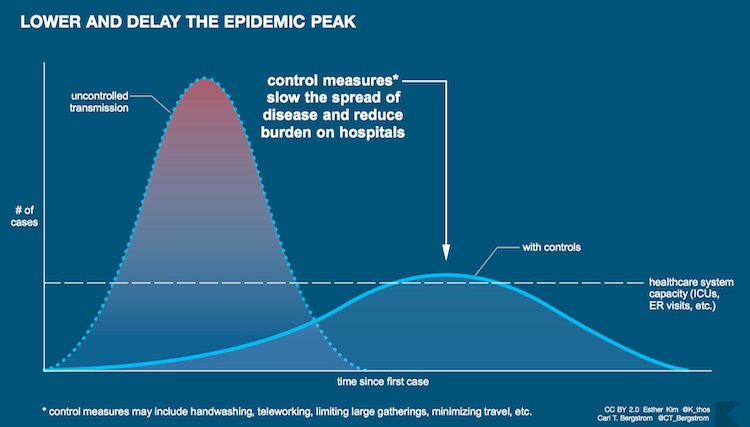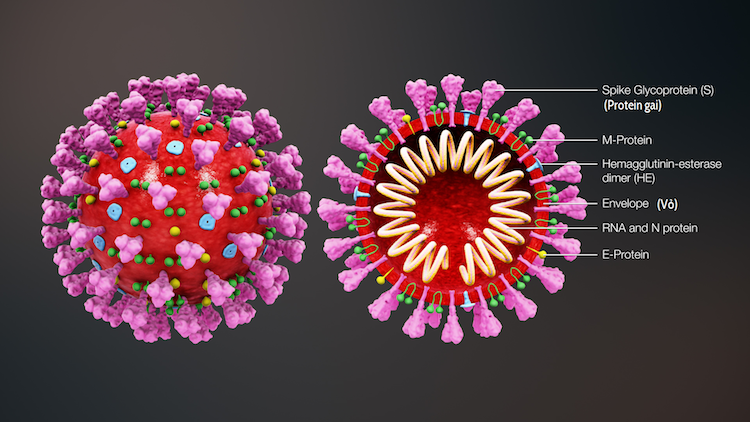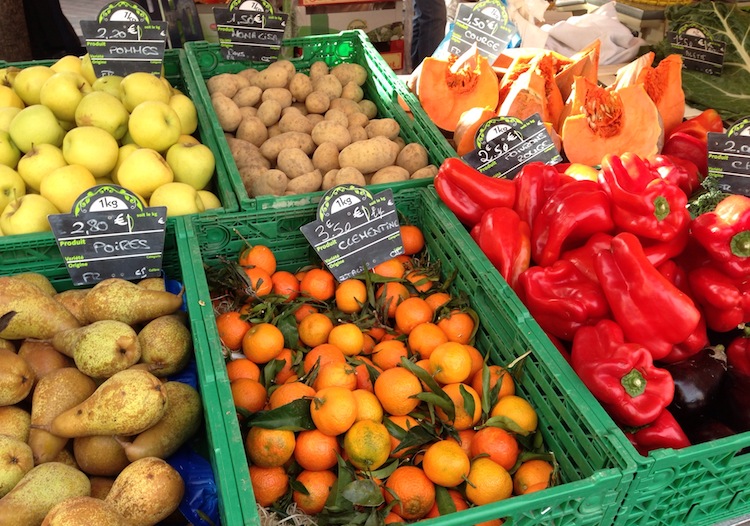The coronavirus that has paralyzed the world originated in China – could the cure be found there, too? We asked an expert on Eastern medicine
Spring 2020: Researchers worldwide are running a sprint and a marathon at the same time to contain and stop Covid-19, focusing on conventional Western medicine and pharmacology. But this deadly virus is far from being the first pandemic in human history: the last major one, dubbed the Spanish flu, hit exactly 100 years ago, claiming millions of lives. It has only been over the course of the last century that Western science and medicine have made significant inroads into finding cures and vaccines. On the other hand, Traditional Chinese Medicine (TCM) has been around for over thousands of years, and has accumulated significant knowledge to stem mass diseases. So what could be more logical than seeing if it has efficient tools in its arsenal to combat the pandemic?
We spoke to a leading American practitioner of TCM, Craig Mitchell, Ph.D., L.Ac., president of (and teacher at) the Seattle Institute of East Asian Medicine and the Center for Integrated Care (SIEAM). Despite his experience in his field, he makes it clear from the get-go that he keeps an open outlook. “I am a firm proponent of medicine that helps patients, whether it be Western or Eastern. I try to make decisions on the basis of what is best for the patient, not what is best for my ideological world view.”
Craig, please tell us a bit about yourself and your experience
 My name is Craig Mitchell and I have been a practitioner of East Asian medicine – acupuncture, Chinese herbal medicine, tuina massage, etc., – since 1993. I was born in Harrisburg, Pennsylvania, USA in 1966 and thought that I would go to Western medical school from the time that I was a teenager. Life experience and direct work in an in-patient psychiatric hospital in the late 1980’s convinced me that my path lay outside the domain of mainstream Western medicine.
My name is Craig Mitchell and I have been a practitioner of East Asian medicine – acupuncture, Chinese herbal medicine, tuina massage, etc., – since 1993. I was born in Harrisburg, Pennsylvania, USA in 1966 and thought that I would go to Western medical school from the time that I was a teenager. Life experience and direct work in an in-patient psychiatric hospital in the late 1980’s convinced me that my path lay outside the domain of mainstream Western medicine.
In 1990 I left western medical school and relocated to San Francisco, California to begin my studies in Traditional Chinese medicine. I graduated in 1993 with a Masters degree and then moved to Taiwan, where I lived and worked for the next four years. While in Taiwan, I continued my studies in East Asian medicine, but I also spent a large amount of time studying the Chinese language and translating medical texts from Chinese into English.
I returned to the US in 1997 and began seeing patients and teaching in New York City. In 1999, my first translation was published of the classic text, “Discussion of Cold Damage“, which dates from the Han Dynasty (206 BC–220 AD). Since then, I have participated in the translation of many other texts, both classical and modern. I am most well known in my community for that first translation, I think because it is a very important text for Chinese herbal medicine practice and also because it made it possible for more students in the US to engage with that classical material from China.
Since 2002 I have been working at the Seattle Institute of East Asian Medicine and the Center for Integrated Care. Through these two interconnected organizations, we provide graduate-level education in East Asian medicine, as well as low-cost healthcare services to our community. SIEAM is a small graduate school in Seattle, Washington, USA that uses an apprentice-style model for training the next generation of East Asian medical practitioners. We focus on clinical training and on the connection between classical and modern texts on East Asian medicine with the clinical realities of seeing patients in our modern-day clinics.
When and how did you first learn of the Covid-19 pandemic?
I first learned about the Covid-19 pandemic in late December when reports were beginning to come out of China. Although it was not a pandemic at that point, my colleagues with direct connections in China were already becoming quite alarmed at the rate of spread and the seriousness of the disease.
Are you surprised that it took the globe so fast and furiously?
I was surprised at first, like I think many people were, but as time has gone by, and I have monitored reports from public health experts, the surprise quickly went away and was replaced with concern about the absence of strong political leadership in many countries.
What went wrong, and what went right in trying to contain the virus?
I am not a public health expert, so I can only comment as an individual citizen, but the absence of strong, focused government efforts combined with misleading information in the media has made this situation much worse. There appear now to be efforts to increase testing and other appropriate public health measures, which seems correct to me.
How come Seattle, where you are practising, is so badly affected?
Seattle was one of the first US cities to have a case of Covid-19, so we have been dealing with it longer than most places in the US. We are a central hub for travelers from Asia into the US, so that may account for why it came here first, although I don’t think we know for sure.
Furthermore, the early cases of Covid-19 in the Seattle region emerged at a long-term care facility for elderly people. Because of the increased susceptibility and fragility of these people, it not only spread quickly, but also resulted in an alarming and disturbing number of deaths. In terms of spread in the region, the current numbers seem to suggest that we may have had some success in flattening the curve through aggressive public health measures, such as physical distancing and an early stay at home order.
Does the high number of victims (sick or deceased) in Europe scare you as a foreboding of what’s to come in the US?
Yes, the total number of cases, as well as the case fatality rate scares me. By the time this interview is published the total cases in NY state alone may well have surpassed the total reported in all of China. So, yes, I am very worried about this pandemic.

Is social distancing or sheltering in place an effective tool to combat the virus, or at least to flattening the curve?
Again, I want to stress that I am neither a Western medical professional, nor a public health expert, but from everything that I have come to understand about this pandemic, physical distancing and staying at home appear to be excellent tools for flattening the curve on the pandemic and maintaining one’s own health. I would also stress that hand washing for at least 20 seconds at a time with warm, soapy water is an excellent way to kill the novel coronavirus, and its utility should not be underestimated.
I am also discussing this topic in this “Qiological” podcast with Michael Max, taped in early March and still pertinent.
Where does alternative medicine come in?
Traditional Chinese medicine – or as I prefer, East Asian medicine, since the tradition includes knowledge and information from not only China, but also Japan and Korea, at a minimum – has several roles to play.
From the beginning of our tradition, in the records, some of which date back over two thousand years, there have always been references to the idea that superior physicians treat illness before it manifests. The EAM tradition is one in which lifestyle practices, food therapy, exercise, proper rest, and other basic strategies for maintaining health are the first line of defense in fighting off any disease.
Because this knowledge is such an important part of our tradition, we can help people less familiar with EAM to take advantage of these insights to stay healthier.
How can EAM fight a virus, especially a hitherto unknown one?
Throughout its history, EAM has been used to treat whatever afflictions were affecting the population.
In the Han Dynasty (~200 C.E.) the text, Discussion of Cold Damage was written in part as a response to the author’s despair over lost family members who were not successfully treated during a disease epidemic. In the 14th-16th centuries, physicians of that time period wrote other foundational texts to address both the failures of Chinese herbal medicine to successfully combat epidemic diseases in that time and also to provide new remedies and ways of addressing the epidemics of that time period. (Editor’s note: Li Shizhen, 1518-1593, pictured below, was one of the leading Chinese natural scientists of the Ming dynasty whose work Compendium of Materia Medica is still a reference to this day.)
It is important to remember that until the late 19th-early 20th century, what we think of as alternative medicine or Traditional Chinese medicine, was just the mainstream medicine of China, Japan, and Korea. As such, EAM actually has a long history of responding to novel epidemics through the use of herbal medicine. Many effective herbal therapies have been developed and refined over this long history of Chinese herbal medicine.
Although like biomedicine, EAM is allopathic, it “opposes” the disease process (treats a fever by using medicinals that bring down fever, generally), it is also fundamentally different from bioscience in some important ways. When we formulate a Chinese herbal remedy, it is done by combining many ingredients, usually between four and twelve, in order to address not only the specific symptoms that the patient is experiencing, but also the underlying constitutional factors that make each patient unique.
This individualized approach makes wide-spread application of Chinese herbal remedies more challenging, since individualized diagnosis and formulation is essential, but also because unlike a pharmaceutical, like an antibiotic, the same biomedically-defined illness is typically treated in many different ways using Chinese herbal medicine.
The benefit of this approach, however, is that a fundamental aspect of the formulation is the aim to engage the innate immune and healing response of the patient, not just to kill the virus or bacteria. This approach can produce cures for individual cases of viral and bacterial diseases, but not in the generalizable way that antibiotics have historically worked against bacterial infections.
Chinese herbal medicine, therefore, is uniquely suited to addressing novel viruses, because it is only partially aimed at combating the virus, and also includes efforts to increase the body’s effective immune response.
What could happen with this specific virus (mutations, future pandemics…) and how can we, as a society and as individuals, prevent it? Could EAM hold the answers?
I think that EAM generally can help us meet future challenges by helping people understand how to be as healthy as possible, as well as providing potential Chinese herbal remedies to address future diseases.

Viruses, by their nature, are prone to mutation, so I think that we can expect that this virus will mutate. I am very supportive of all the efforts to understand the novel coronavirus, sequence and learn about the specific genes involved, and work towards developing rapid testing, as well as treatments and vaccines using the biomedical model. I believe that this is a situation in which all of us have to work together, applying the unique strengths and insights of biomedicine and EAM to address this and future disease outbreaks.
How can EAM be helpful in building a strong immune system to prevent infections of any kind (Covid-19, flu, cold…)?
We, in the EAM community, are developing an understanding of Covid-19 from our clinical perspective. The insights we are gleaning from reports out of China, as well as from our own clinical encounters with Covid-19, suggest that basic measures to protect our health can be helpful in this situation:
First, making sure that you get adequate sleep is critical for the functioning of a healthy immune system. Second, regular exercise can be very helpful for relieving stress and supporting many bodily functions. Third, meditation or similar practices are an effective way to combat the stress and anxiety that this type of situation can produce. Fourth, eating a balanced diet that contains a small quantity of high-quality, humanely-produced meats, along with whole grains and large amounts of fresh vegetables is also an essential component of a well-functioning immune system.

In the classic texts of EAM, working with lifestyle and diet is always suggested before the use of more “invasive” interventions like herbal medicine or acupuncture.
What else would you like our readers to know?
A group of clinicians and researchers working at the Seattle Institute of East Asian Medicine and the Center for Integrated Care, have designed a pragmatic clinical trial of Chinese herbal medicine to support patients with suspected Covid-19 symptoms or other associated respiratory illnesses. This trial is going through Institutional Review Board approval right now and we hope to begin enrolling patients in the coming weeks. We are planning to treat patients, gather data, and then share that data in an ongoing fashion with the public and with members of the EAM community. Relevant information will be published on our website.
Thank you for your time and for sharing these insights with us, Craig Mitchell!
To stay safe during this time, to help flatten the curve, and to protect others, please remember the advice of healthcare professionals all over the world:
• Stay at home!
• If it is unavoidable to go outside, keep the prescribed physical distance.
• Wash your hands with soap frequently for 20 seconds.
• Sneeze in a disposable tissue or in your elbow if you don’t have one at hand.
• Wipe hard surfaces in your home as well as items you touch often, like your cell phone, regularly with a disinfecting tissue.
• Remember that pets do NOT transmit the virus – do not abandon them!
![]()
Lead image by CDC/ Alissa Eckert, MS; Dan Higgins, MAMS – This media comes from the Centers for Disease Control and Prevention‘s Public Health Image Library (PHIL), with identification number #23312. Public Domain, Link; Flatten the Curve by Esther Kim@k_thosandCarl T. Bergstrom@CT_Bergstrom – https://twitter.com/CT_Bergstrom/status/1236426968444235777/photo/1, CC BY 2.0, Link; photo of 3D medical animation coronavirus structure by https://www.scientificanimations.com – This file was derived from: 3D medical animation coronavirus structure.jpg, CC BY-SA 4.0, Link; photo of fresh fruit & veg market © RIVIERA BUZZ


Leave a Reply